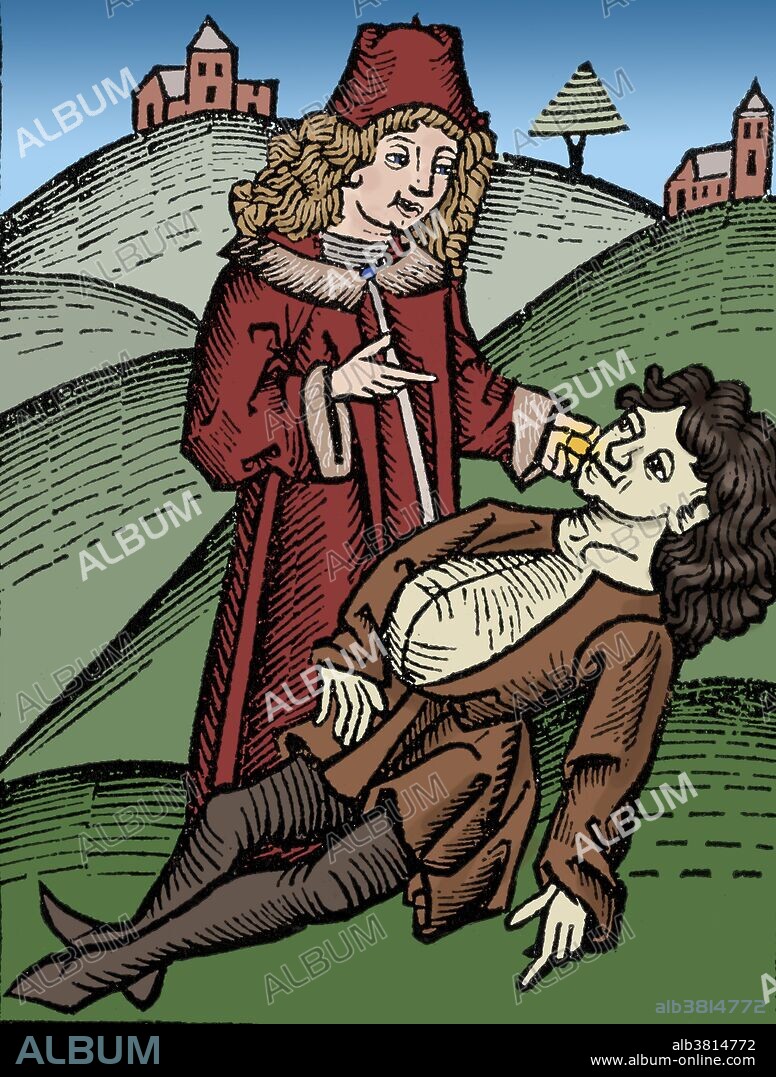alb3814772
Bezoar Stone, Medieval Antidote for Poisoning

|
Zu einem anderen Lightbox hinzufügen |
|
Zu einem anderen Lightbox hinzufügen |



Haben Sie bereits ein Konto? Anmelden
Sie haben kein Konto? Registrieren
Dieses Bild kaufen.
Nutzung auswählen:

Titel:
Bezoar Stone, Medieval Antidote for Poisoning
Untertitel:
Siehe automatische Übersetzung
Use of bezoar stone in a case of poisoning, 1497. A bezoar is a mass found trapped in the gastrointestinal system, though it can occur in other locations. Bezoars were sought because they were believed to have the power of a universal antidote against any poison. It was believed that a drinking glass which contained a bezoar would neutralize any poison poured into it. The word bezoar comes from the Persian pad-zahr, which literally means "antidote". The Andalusian physician Ibn Zuhr, known in the West as Avenzoar, is thought to have made the earliest description of bezoar stones as medicinal items. In 1575, the surgeon Ambroise Pare proved that the bezoar stone could not cure all poisons as was commonly believed at the time. Illustration appeared in Hortus Sanitatus, published in 1497. This image has been color enhanced.
Bildnachweis:
Album / Science Source / New York Public Library
Freigaben (Releases):
Bildgröße:
2979 x 3931 px | 33.5 MB
Druckgröße:
25.2 x 33.3 cm | 9.9 x 13.1 in (300 dpi)
Schlüsselwörter:
 Pinterest
Pinterest Twitter
Twitter Facebook
Facebook Link kopieren
Link kopieren Email
Email
